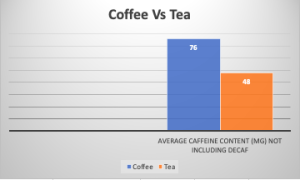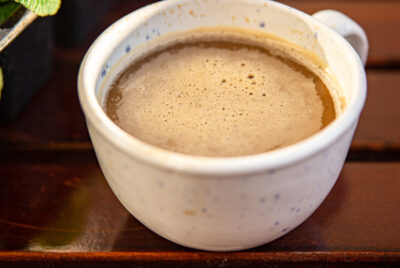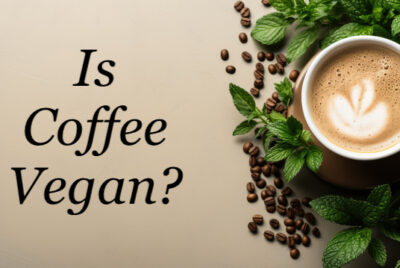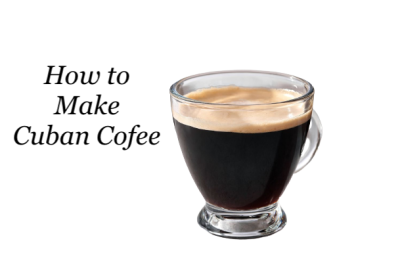Does Tea Have More Caffeine Than Coffee?
Hey there, fellow caffeine enthusiasts! Ever found yourself locked in a debate with your tea-loving friends about whether their green or black tea packs more caffeine than your beloved espresso? It leads to the question: “Does tea have more caffeine than coffee?”
Let’s dive into this fascinating debate and uncover the truth!
Debunking the Myth
First off, let’s address the elephant in the room. We’ve all heard it: “Tea has more caffeine than coffee.” But is there any truth to this?
Brief History of Both Beverages
Ah, tea and coffee, two beverages that have traveled through time and across continents, leaving a rich tapestry of stories in their wake. Let’s time-travel a bit and uncover their fascinating origins, shall we?
Tea’s Timeless Tale
Originating in ancient China, tea’s discovery is enveloped in legends. The most popular one narrates the story of Emperor Shen Nong in 2737 BC. The tale goes that he was boiling water under a tea tree, and a few leaves serendipitously drifted into his pot. Upon sipping the accidentally brewed tea, he was taken by its refreshing flavor. Thus, began the journey of tea!
From China, tea’s popularity spread along trade routes. By the Tang dynasty, it was firmly established as the national drink of China. From there, it traveled to Japan, and Buddhist monks played a pivotal role in introducing it to Japanese culture.
Fast forward to the 17th century, and tea made its grand entrance into Europe through Portuguese and Dutch traders. England embraced the beverage wholeheartedly in the mid-1600s, with afternoon tea becoming an iconic British tradition.
Coffee’s Enchanting Expedition
Coffee’s origin is as mystic as tea’s, grounded in the Ethiopian highlands. Legend speaks of a goat herder named Kaldi, who noticed his goats prancing energetically after consuming red berries from a certain plant – the Coffea plant. Curious, Kaldi tried these berries and felt a sudden surge of energy. The magic of coffee was discovered!
These berries and their magical effect piqued the interest of monks in monasteries. They boiled them, leading to the world’s first coffee brew, helping them stay awake during extended hours of prayer.
From Ethiopia, coffee beans journeyed to Yemen by the 15th century. The port city of Mocha became a pivotal coffee trading center. By the 16th century, coffee had reached the Ottoman Empire, North Africa, Persia, and later Europe. It was in Europe that the first coffeehouse opened in Venice in 1645, quickly turning into hubs of social activity.
Both these beverages, with their distinctive histories, have deeply influenced cultures, trade, and even sparked revolutions. Their impact, both historically and culturally, is truly profound!
Basic Differences
Coffee and tea, while both being popular caffeinated beverages, are as different as night and day in many aspects. Let’s have a heart-to-heart about these differences, as if we’re old friends discussing our favorite brews over a cozy get-together.
Plant Origins:
Tea:
All genuine teas (black, green, oolong, and white) come from the Camellia sinensis plant. The variations in flavor and color arise from the processing methods and the time of harvest.
Coffee:
Coffee is sourced from the cherries of the Coffea plant, with the two most well-known species being Coffea arabica (often just called Arabica) and Coffea canephora (known as Robusta).
Processing & Preparation:
Tea:
Processing tea can involve multiple steps like withering, rolling, oxidizing, and drying. The level of oxidation greatly influences the type of tea produced (for example, green tea is unoxidized while black tea is fully oxidized). As for brewing, steeping times and water temperatures vary according to the type of tea for optimum flavor.
Coffee:
Coffee cherries undergo processes to extract the seed or beans. These beans are then roasted to varying degrees, influencing the flavor and caffeine content. The preparation involves grinding the beans and brewing, which can be done using various methods like espresso, French press, or drip, among others.
Flavor Profile:
Tea:
The flavor spectrum for tea is vast – from the grassy notes of green tea to the malty profile of an Assam black tea. Factors like soil, altitude, and processing impart unique flavors to each type.
Coffee:
Coffee flavors can range from sweet and fruity to dark and nutty, depending on its origin and roast. The roast can bring out flavors like caramel, berries, or even chocolate. Many aficionados enjoy tasting beans from different regions, much like wine enthusiasts appreciate wines from various terroirs.
Caffeine Content:
Tea:
Generally, tea contains less caffeine than coffee. However, the caffeine content can vary depending on factors like the type of tea, its processing, and brewing time.
Coffee:
Typically higher in caffeine, a standard cup of coffee can have almost double or more the caffeine of a cup of tea. However, like tea, factors such as the type of coffee bean, roast level, and brewing method can influence caffeine levels.
Cultural Significance:
Tea:
Tea ceremonies in Asia, like the Japanese chanoyu or the Chinese gongfu tea ceremony, hold deep cultural and spiritual significance. In Britain, “tea time” has iconic status.
Coffee:
Coffeehouses or “cafés” have been central to social life in many cultures. In places like Italy, sipping an espresso is an art. In others, coffee is vital to business and social gatherings.
Though different in many respects, both coffee and tea have rich traditions, diverse flavors, and their own special places in our daily rituals and social moments.
Diving into Caffeine Content
The Raw Numbers:
When discussing caffeine content, it’s crucial to get down to the nitty-gritty and discuss the actual numbers. Here’s a clear-cut breakdown of the caffeine content found in different types of coffee and tea.
On average, an 8 oz. cup of coffee contains between 95 and 200 mg of caffeine, depending on how it’s brewed. Comparatively, an 8 oz. cup of tea can range from 20 to 60 mg of caffeine. Surprised?


Coffee:
-
- Standard Drip or Filtered Coffee:
- 8 oz (240 ml) serving: 95 mg on average, but can range from 70 to 140 mg based on bean variety and brewing time.
- Espresso:
- 1 oz (30 ml) serving: 63 mg. However, remember, espresso servings are much smaller. So, even though it’s concentrated, a shot of espresso might have less caffeine than a full cup of drip coffee.
- Instant Coffee:
- 8 oz (240 ml) serving: 30 to 90 mg. The range is broad due to the differences in brands and the amount of coffee powder used.
- Decaf Coffee:
- 8 oz (240 ml) serving: 0-7 mg. It’s a misconception that decaf is entirely caffeine-free; it contains a minimal amount.
- Standard Drip or Filtered Coffee:
Tea:
-
- Black Tea:
- 8 oz (240 ml) serving: 40 to 70 mg. Factors such as steeping time and tea leaf cut size can affect this range.
- Green Tea:
- 8 oz (240 ml) serving: 20 to 45 mg. The range here can be influenced by the quality of the tea and steeping duration.
- White Tea:
- 8 oz (240 ml) serving: 15 to 30 mg. Being the least processed tea, white tea’s caffeine content can vary based on the age of the tea leaf when picked.
- Oolong Tea:
- 8 oz (240 ml) serving: 30 to 50 mg. Oolong, being between black and green tea, has a moderate caffeine content.
- Herbal Teas (like chamomile or peppermint):
- 8 oz (240 ml) serving: Typically caffeine-free. However, always check the label as some blends can incorporate teas that contain caffeine.
- Black Tea:
Factors Influencing Caffeine Amounts
While the debate rages on about whether tea or coffee packs more of a caffeine punch, it’s essential to understand that several variables can swing the balance in favor of one beverage over the other. Here’s a closer look:
Type of Bean or Leaf:
Coffee (Arabica vs. Robusta): Arabica beans generally contain less caffeine than Robusta beans. The type of bean your coffee is made from will significantly influence its caffeine content.
Tea (Black, Green, White, Oolong): Black tea generally contains more caffeine than other tea types, but this can vary based on several other factors discussed below.
Processing Method:
Tea: The level of oxidation the tea leaves undergo affects their caffeine content. Black tea is fully oxidized, leading to a higher caffeine content than partially oxidized or unoxidized teas like green or white tea.
Coffee: The roasting process can break down caffeine. Dark roasts typically contain slightly less caffeine than light roasts.
Preparation and Brewing:
The size of the grind or cut (for coffee and tea respectively), water temperature, and brewing time can all affect caffeine extraction. For instance, finely ground coffee or finely cut tea leaves will extract caffeine more rapidly than coarser counterparts.
Plant Age and Part:
Younger tea leaves (like the ones used for high-quality white tea) generally contain more caffeine than older leaves. Similarly, the part of the tea plant used can influence caffeine levels. Buds and young leaves usually contain more caffeine than older, mature leaves.
Growing Conditions:
Factors like soil quality, altitude, and rainfall can affect the caffeine content in both coffee and tea plants. For example, tea plants grown in shaded conditions (like Matcha) often have higher caffeine levels than those grown in direct sunlight.
Serving Size:
While espresso may be more concentrated in caffeine, it’s typically served in smaller amounts than a standard cup of tea or drip coffee. Hence, serving size can skew perceptions of which beverage delivers more caffeine.
Brand and Blend:
Commercial brands might blend beans or leaves from various sources, leading to different caffeine levels. Some brands might also specially process their products to increase or decrease caffeine content.
Decaffeination:
Both coffee and tea are available in decaffeinated versions. The decaffeination process removes most — but importantly, not all — of the caffeine.
Considering all these factors, it becomes clear that while on average, a cup of coffee might contain more caffeine than a cup of tea, specific preparations and circumstances can challenge this norm. The dynamic nature of caffeine content in these beloved beverages adds another layer of depth to the ongoing coffee vs. tea debate!
Impact on Health
Benefits of Caffeine:
From enhanced focus to improved athletic performance, caffeine can be a godsend. Both tea and coffee offer antioxidants and other health benefits.
Potential Downsides:
As the saying goes, too much of a good thing… Overconsumption can lead to jitters, insomnia, and other unpleasant side effects.
Personal Preferences: Which is Right for You?
Maybe you love the rich depth of coffee or the nuanced flavors of tea. Or perhaps it’s all about that caffeine hit. No judgment here! Find what works for your palate and energy needs.
Does Tea Have More Caffeine Than Coffee Conclusion
Answering the question: “Does tea have more caffeine than coffee?“, while coffee generally contains more caffeine than tea, there are exceptions. Explore, experiment, and enjoy your caffeinated journey, knowing the facts!
FAQs
Which tea has the most caffeine?
Typically, black teas, especially those brewed longer.
Does steeping tea longer increase its caffeine?
Yes, longer steeping can extract more caffeine.
What about herbal teas?
Herbal teas usually contain no caffeine.
Are there decaf versions of coffee and tea?
Yes, both beverages offer decaffeinated versions.
How can I boost the caffeine in my morning drink?
Opt for Robusta beans in coffee and steep your tea a bit longer.




